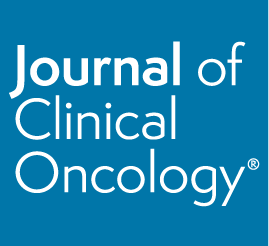Innovation in recruitment and curricular design for diversity, equity, and inclusion (DEI) education for hematology-oncology (HO) trainees.

Meeting Abstract | 2022 ASCO Quality Care Symposium
![]()
Article Tools
Health Care Access, Equity, and Disparities
Article Tools
![]()
Background: Alongside persistent disparities in healthcare outcomes in HO, there is an inability to adequately recruit, maintain and promote a diverse and inclusive work force nationwide. To our knowledge, a structured approach to DEI education/recruitment in HO training is lacking. We sought to establish a longitudinal curriculum aimed at educating HO trainees in structural barriers impacting cancer equity and developing tools to enhance Underrepresented in Medicine (URiM) recruitment. Methods: Trainee-led DEI framework was presented to program leadership and officially adopted into the curriculum for the 2021-22 academic year. This consisted of initiatives across 4 domains: 1. Curricular Development (emphasis on disparities during trainee orientation, didactic lectures on cancer disparities, financial toxicity, workforce diversity, pandemic impact on cancer inequities) ; 2. Recruitment & Retention (implicit bias training, targeted recruitment from HBCUs, trainee-led discussions on enhancing recruitment); 3. Engagement & Mentorship (local community mentorship within institution, external mentorship through ASCO URM MSR program); 4. Disparities Research (career guidance sessions with invited faculty, development of registry-based studies to evaluate disparities). Impact of new curriculum was measured through anonymous surveys, at 1, 7, and 12 months during the academic year. A 5-point Likert scale (strongly disagree to strongly agree) was utilized. Results: At baseline, surveyed trainees were predominantly PGY5 (33%), ages 31-40 (66%), and self-identified as White or Caucasian (47%). Over the academic year, trainee recognition of structural barriers that prevented oncologic care delivery increased. More trainees felt departmental/fellowship-wide DEI efforts were transparent and impactful leading to quantifiable changes, and creation of new mentorship opportunities. Trainees rated the following as most helpful to address biases in the workplace: opportunities to mentor minority high school/college-level students, implicit bias training, and formal lectures. Anonymous qualitative feedback from fellows favored small group discussions and encouraged a top-down approach to promoting diversity in leadership. One trainee-mentored URiM medical student presented work at the ASCO annual conference on cancer disparities, while program leadership efforts led to incoming trainee class comprised of 25% URiM. Conclusions: We demonstrate feasibility of a longitudinal DEI curriculum in HO trainee education and recruitment that raises awareness and creates opportunity for URiM. Future efforts will build on this curriculum utilizing trainee feedback and departmental buy-in with the goal of building an oncologic workforce that better reflects the patients we care for.
© 2022 by American Society of Clinical Oncology
